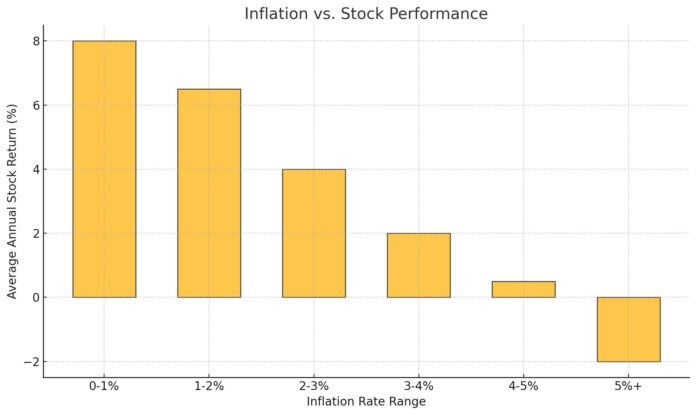Getting started in trading can feel overwhelming, but focusing on a few key areas can help you make smarter decisions right away. The goal is to find practical approaches that minimize risk and increase the potential for consistent returns.
Success isn’t about chasing flashy trends but about developing sound strategies rooted in clear financial principles. Let’s explore where you should direct your energy for maximum impact.
Table of Contents
- Start with Research – Why the Right Information Matters
- Build Your Portfolio – The Role of Diversification
- Master Risk Management – Protecting Your Investments
- Analyze Economic Indicators – Macro Trends That Matter
- Explore Growth Opportunities – Leveraging Long-Term Value
1. Start with Research – Why the Right Information Matters

Every successful trader starts with strong research skills. Knowing where to find credible sources and how to evaluate opportunities gives you a solid foundation. For instance, reviewing sectors known for reliable payouts can direct you toward promising areas. A great way to begin is by examining highest dividend stocks for potential candidates.
Focus on Key Metrics
- Dividend yield: Check whether the payout is sustainable based on company earnings.
- Payout ratio: A lower ratio often indicates the company has room for growth.
- Industry strength: Ensure your chosen sectors are resilient during economic shifts.
A Real-World Example
Consider utilities or consumer staples. These industries typically offer stability during downturns, making them attractive starting points for research.
2. Build Your Portfolio – The Role of Diversification
Diversification spreads your investments across different sectors or asset classes to reduce overall risk. A concentrated portfolio may seem profitable in the short term but can collapse if a specific sector underperforms.
How to Diversify
- Divide your portfolio between growth and income-focused assets.
- Allocate funds into sectors like healthcare, technology, and consumer goods.
- Include non-stock options like bonds or ETFs for balance.
The 60/40 Rule
A traditional rule involves placing 60% of your portfolio in equities and 40% in bonds. This approach prioritizes growth while providing some income stability. Adjust allocations based on your risk tolerance.
3. Master Risk Management – Protecting Your Investments

Managing risk means taking precautions to limit losses. New traders often ignore this aspect, focusing instead on quick gains. However, learning to mitigate risks ensures longevity.
Essential Strategies
- Use stop-loss orders to limit potential losses.
- Avoid over-leveraging positions, as debt can magnify downturns.
- Keep cash reserves ready to capitalize on sudden market dips.
Common Pitfalls
Overconfidence leads many beginners to invest heavily in one area. A balanced approach helps prevent significant setbacks.
4. Analyze Economic Indicators – Macro Trends That Matter
Economic trends shape markets. Monitoring metrics like GDP, unemployment rates, and inflation reveals how broader forces influence individual companies.
Key Indicators to Watch
- Inflation: Rising inflation often leads to higher interest rates, affecting borrowing costs.
- Interest rates: High rates can pressure growth-focused companies, favoring stable sectors.
- Consumer confidence: Indicates whether spending trends will boost certain industries.
Chart: Inflation vs. Stock Performance
Below is a histogram demonstrating how inflation rates historically correlate with market returns.
This histogram is showing the relationship between inflation rates and average annual stock returns. The chart provides a clear visualization of how varying inflation levels historically correlate with stock performance.
5. Explore Growth Opportunities – Leveraging Long-Term Value

Chasing short-term gains often ends poorly. Instead, prioritize opportunities offering steady growth over time. Many investors succeed by identifying undervalued companies with robust fundamentals.
Spotting Value
- Look for companies trading below their intrinsic value based on metrics like P/E ratios.
- Monitor earnings growth to identify trends.
- Track insider activity as a signal of confidence within the firm.
Dividends and Reinvestment
Reinvesting dividends compounds your returns significantly over time. This strategy works well in sectors offering stable payouts, such as utilities or REITs.
6. Learn to Use Technical Analysis – Timing Your Entries and Exits
Technical analysis provides insights into price patterns and market trends, helping traders decide when to buy or sell. While it’s not a crystal ball, it offers valuable guidance when paired with fundamental analysis.
Tools for Technical Analysis
- Moving Averages: Useful for identifying trends and smoothing out price fluctuations.
- RSI (Relative Strength Index): Measures momentum to determine if an asset is overbought or oversold.
- Volume Trends: Rising volume during price increases may signal strength in the movement.
Example Strategy
For beginners, a simple moving average crossover strategy can work well. Buy when the short-term average crosses above the long-term average, and sell when it falls below. This approach keeps decisions systematic rather than emotional.
7. Embrace the Power of Compounding
Many new traders underestimate the potential of compounding returns. Reinvesting earnings or dividends into your portfolio accelerates growth over time, creating a snowball effect.
The Math Behind Compounding
Imagine investing $10,000 at an annual return of 8%. Without reinvesting, you’d earn $800 per year. With compounding, those returns grow exponentially. By year 10, your account could exceed $21,000.
Reinvestment Strategies
- Reallocate gains into higher-growth opportunities.
- Use dividend reinvestment plans (DRIPs) to automatically purchase additional shares.
- Adjust allocations periodically to reflect changing risk profiles.
Long-Term Benefits
Compounding isn’t flashy, but it’s powerful. Traders who consistently reinvest can outperform those chasing unsustainable high-risk returns.
8. Avoid Common Emotional Traps

Emotions can sabotage even the best plans. Fear and greed drive impulsive decisions, such as panic selling during downturns or buying overvalued assets during booms.
Recognize Behavioral Biases
- Confirmation Bias: Seeking information that aligns with preconceived notions.
- Loss Aversion: Holding onto losing investments too long to avoid admitting mistakes.
- FOMO (Fear of Missing Out): Jumping into trades without proper analysis because others are profiting.
Tips to Stay Objective
- Stick to your pre-determined strategies and rules.
- Avoid making decisions during heightened emotional states.
- Use trading journals to review decisions and identify patterns in your behavior.
Practice Discipline
Building consistency means learning to ignore market noise and focusing on your goals. Emotional discipline separates successful traders from those who burn out.
9. Develop a Routine and Stick to It
Trading success often depends on habits. A structured approach helps eliminate guesswork and ensures you remain focused on what matters.
Daily Routine
- Review key economic data and market news.
- Analyze your portfolio’s performance and adjust as needed.
- Plan trades based on technical and fundamental analysis.
Weekly Review
Set aside time each week to reflect on your progress. Ask yourself:
- Did your trades align with your strategy?
- Were there missed opportunities due to lack of preparation?
- What lessons can you apply to the coming week?
Long-Term Perspective
A routine ensures you’re not trading haphazardly but rather working toward clear goals. Regular reflection also helps fine-tune your methods, improving decision-making over time.
10. Know When to Take a Break

Trading fatigue is real. Constant monitoring and decision-making can lead to burnout. Knowing when to step away is just as important as knowing when to act.
Signs You Need a Break
- Increased frustration after losses.
- Rash decisions driven by impatience.
- Neglecting other aspects of life due to trading stress.
Resetting Your Mindset
- Take a day off to clear your mind and regain focus.
- Revisit your long-term goals and remind yourself why you started.
- Use downtime to deepen your understanding of markets through reading or courses.
Maintain Balance
Success in trading isn’t only about strategies and numbers. It’s about sustaining the mental energy needed for consistent, rational decisions.
Final Thoughts
New traders benefit most by focusing on foundational practices. Research, diversification, risk management, and routine-building create a strong framework for long-term success. Emotional control and understanding macroeconomic trends further enhance your ability to adapt and grow.
Trading isn’t about luck or chasing fleeting opportunities. It’s about developing a disciplined, informed approach that yields steady progress over time. Remember, every decision should align with your broader financial goals, creating a pathway to lasting success.










